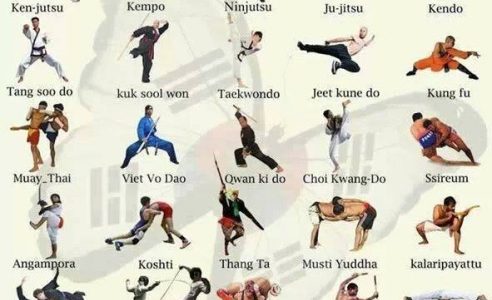The Relevance Of Adaptability In Martial Arts Training
The Relevance Of Adaptability In Martial Arts Training
Blog Article
Short Article Created By-Hoppe Lawrence
Did you understand that adaptability plays a crucial function in martial arts training?
In mixed martial arts , a study conducted by the International Journal of Sports Physical Therapy revealed that over 80% of martial artists fight with limited flexibility.
But why is versatility so essential? Well, it not only enhances your performance and strategy yet also lowers the risk of injuries.
So, if systema martial arts looking to take your fighting styles skills to the next degree and remain injury-free, you'll certainly intend to keep reading.
Benefits of Flexibility in Martial Arts
Adaptability in fighting styles brings countless benefits to professionals, enabling you to boost your efficiency and minimize the threat of injury. By improving your adaptability, you increase your range of activity, enabling you to implement methods with greater precision and performance.
This enhanced dexterity and fluidness in your activities can give you an one-upmanship, permitting you to respond quicker and adapt to different situations throughout competing or competitions. Additionally, increased versatility aids to prevent injuries by improving muscular tissue flexibility and joint movement.
It allows your body to move a lot more freely, reducing the strain on your muscles and tendons. This, subsequently, lessens the possibilities of sprains, stress, and muscle mass pulls. By incorporating flexibility training right into your martial arts method, you not just improve your efficiency yet also secure your physical health.
Methods to Boost Adaptability
To enhance your versatility in martial arts, you can include various extending workouts right into your training routine.
One effective strategy is vibrant extending, which involves moving through a complete range of movement to warm up your muscular tissues and increase adaptability. Examples consist of leg swings, arm circles, and trunk turnings.
Another strategy is static stretching, where you hold a go for a sustained amount of time. This assists lengthen and relax your muscular tissues, improving versatility gradually. Typical fixed stretches for fighting styles include the butterfly stretch, hindering stretch, and shoulder stretch.
In addition, incorporating yoga or Pilates into your training can also greatly boost your adaptability.
Bear in mind to constantly warm up before stretching and listen to your body to stay clear of injury.
Adaptability Training for All Skill Levels
As you proceed in your martial arts training, boosting your flexibility ends up being crucial for enhancing your total efficiency. Versatility training isn't only advantageous for advanced professionals yet additionally for newbies and intermediate pupils.
No matter your skill degree, integrating versatility exercises right into your training routine will aid you create a wide range of movement, stop injuries, and improve your strategy implementation.
For newbies, flexibility training can help enhance your form and position, permitting you to perform motions correctly and effectively. Intermediate specialists can utilize adaptability training to further boost their range of activity and boost their fluidity in performing complex techniques. Advanced pupils can benefit from flexibility training by preserving and refining their existing adaptability, enabling them to execute sophisticated steps effortlessly.
Conclusion
Finally, embracing adaptability in your martial arts training is extremely important. By incorporating strategies to boost flexibility, you can enhance your performance and prevent injuries.
Keep in mind, 'An adaptable body is a durable body.' So, keep pressing your restrictions, stretching frequently, and reap the benefits of a flexible and dexterous figure.
